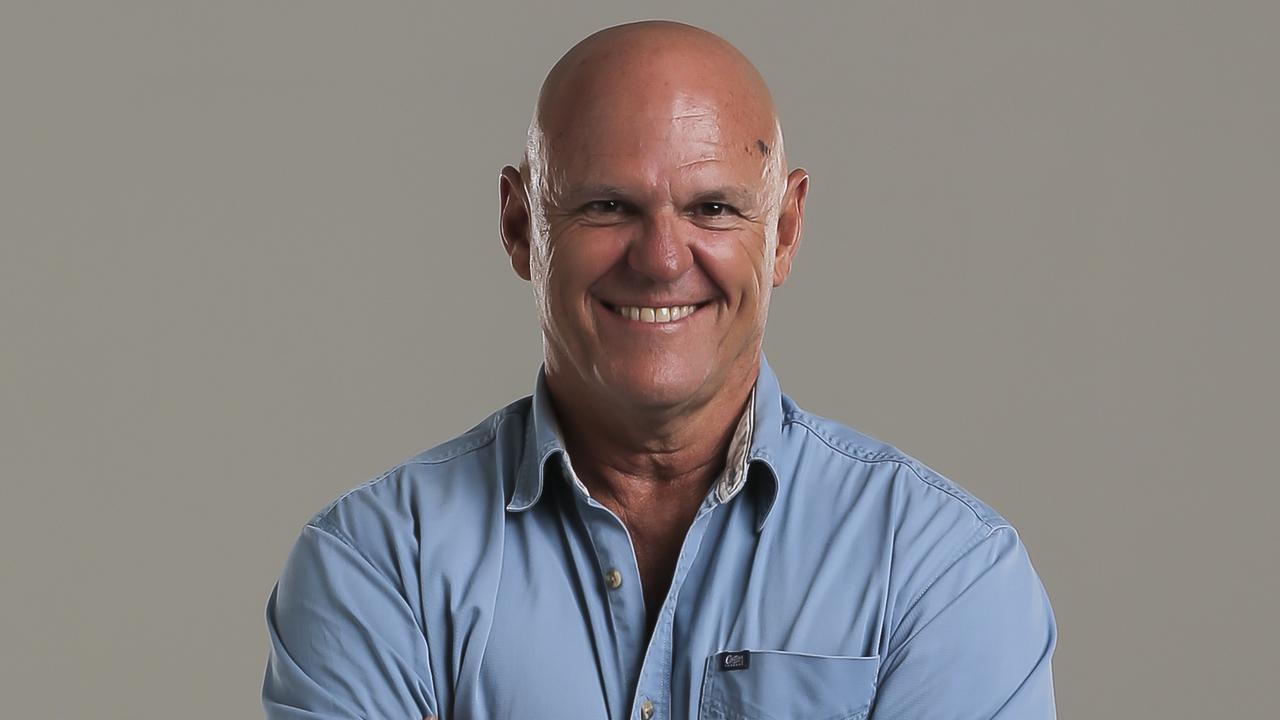Horror headlines killing Queensland tourism
As Queensland again makes the news for all the wrong reasons we take an in-depth look at exactly what our options are in regards to stopping shark attacks.
Opinion
Don't miss out on the headlines from Opinion. Followed categories will be added to My News.
WHEN a shark attacked two tourists snorkelling in the Whitsundays, there were “screams and blood in the water”.
Not all of them came from the shark victims. Reef tourism operators, too, howled in collective pain. Five shark attacks – one fatal – in just over a year.
As two brave Brits were airlifted to Mackay hospital – one with his foot bitten off and the other with a shark bite to his calf – it turned into a feeding frenzy.
“Britons mauled in shark attack. Backpacker loses foot as predator savages snorkellers off Oz coast,’’ blared one UK tabloid headline.
“Queensland shark attack: Two British men injured at tourist spot”, reported the BBC.
As if fake publicity that “The Reef is Dead” was not bad enough.
But this time, it’s different.

Tourism leaders from Cairns to the Whitsundays and Brisbane are demanding action to protect the fate of the state’s $6 billion reef tourism industry. They warn that the Great Barrier Reef’s status as a World Heritage site is at risk, if not handled properly.
Today they are slated to meet in Brisbane with federal and state government officials about their wish-list of proposed shark control measures.
“We’ve got to do something,’’ Daniel Gschwind, of the peak Queensland Tourism Industry Council said.
“We can’t get buried in the blood sport of politics.
“I like to think everybody, all of us want the same outcome, and that’s to protect our reputation as a safe place for all of us to visit and swim.”
He accepts shark attacks are incredibly rare. We’re more likely to be killed in a traffic crash, or by a toaster, or a bee sting, or a coconut falling on our head, than from a shark attack, statistics show.
“Accidents do happen,” Mr Gschwind said.
“Here in Queensland we sell and promote and encourage interaction with nature. The Great Barrier Reef Marine Park is vast and diverse in its geography and it is one of the most inspiring wilderness areas on the planet. It is attracting millions of visitors every year.
“But human life is most important. How we handle our reputation as a safe destination, for visitors and residents, is critical.’’
They also call for “transparency” about findings of studies into shark activity and what species of sharks were the likely culprits in each of the five attacks.
Tourism leaders in Cairns and the Whitsundays, in a joint letter, urged a way forward without further damage to the public perception about any risks of visiting the Great Barrier Reef.
“Any unnecessarily alarming publicity has the potential to further damage a perception-driven tourism industry,” it said.
They suggest some alternative non-lethal shark control measures, including smart drum lines, deterrent devices, aerial surveillance and barriers.
The Courier-Mail looks at the pros and cons:
SMART DRUM LINES
Smart drum lines are exactly the same as the standard baited drum lines, except that when an animal is hooked a signal is automatically transmitted to a crew onshore, who travel out to tag and release the shark. The hooks used are designed to cause minimal damage and the operation to tag and release is mercifully quick.
Shark expert Dr Paul Butcher, who heads groundbreaking research into smart drum lines, said they allowed for targeted fishing of threatening species like whites, tigers and bull sharks.
On a standard drum line, they die on the hook, or are shot by the contractor.
Smart drum lines use a satellite iridium network, and when a shark is hooked, the local contractor and researchers get an email, phone call and text message with a GPS location of the drum line.

In NSW, the average response time is about 18 minutes, travelling up to 13km from port to the drum line. Cons are the cost. The initial outlay is hefty. It is reliant on contractors working every day up to 13 hours a day, going out to the drum lines several times a day to tag and release sharks, sometimes in harsh weather conditions.
It costs $23 a drum line for satellite network connection, between $1500-$3000 a drum line, and between $1000-$2500 a day to have two contractors and a boat available to work up to 13 hours every day.
AERIAL SURVEILLANCE
Most experts agree it is too expensive to pay for pilots and spotters in light aircraft or helicopters to routinely fly over popular beaches and reef snorkel sites.
But many boffins support the use of advanced drone technology using real-time video using shark spotting software and operated by artificial intelligence.
They believe, in the future, drones on a pre-programmed flight path, will be able to travel up and down the coast and popular reef tourist sites, identifying sharks in the water.
Sharks that pose a threat can already be detected in real-time by the shark-spotting software and swimmers alerted by a megaphone or alarm on the drone, experts say.
“I don’t think the idea is to have thousands of drones scanning the entire coastline,” Dr Karen Joyce, of James Cook University in Cairns, said. “We’d focus on areas where people are, where there is the greatest risk.’’

Lifeguards in far-north Queensland have already been trained as drone pilots and are regularly deploying drones to spot crocodiles.
“Visibility is the biggest obstacle,’’ shark expert Dr Barbara Wueringer, of Cairns, said.
“Sharks are camouflaged predators, and if they are swimming along the bottom of the sea floor they are very hard to detect.
“And most of the water on the beaches along the mainland coast of north Queensland is murky. It’s like soup, it’s not clear at all, you can’t even see your feet.’’
Last summer, Australia’s largest-ever shark spotting drone trial flew more than 8000 flights at 20 sites along the New South Wales coast.
The data showed a total of 370 sharks were spotted, it identified certain locations as shark hotspots, and revealed the peak month for shark activity was January.
SWIMMING ENCLOSURES
Stinger season has just started in the state’s tropical north, mainly October to May, and stinger nets are back in the water.
“Why not just leave them in the water all year round?’’ Dr Wueringer said. “It can protect swimmers from sharks, crocodiles and stingers. They are right in front of the lifeguard huts. I think it’s a great solution.
“If it makes swimmers feel safer to get in the water, why not?”
The flexible nylon barrier is built from the seabed to the surface – with floats on the top line – and is designed to withstand wave action.
They have proved not to be up to scratch at open beaches where there is a lot of sand movement.
Perth’s popular Cottesloe beach is the latest in that state to install a 170m by 140m enclosure at a cost of $835,000 to protect swimmers from great white sharks.
But reports show that on several occasions, small sharks have been found inside on the wrong side of the net enclosures.
SHARK DETERRENT DEVICES
Experts say deterrents have been developed to elicit a response by impacting one or more of the shark senses, including vision, smell and electroreception.
However, the sensitivity of the electro-receptive organ of sharks to strong electric fields and its potential ability to deter sharks have been the most studied.
There are several commercially available personal shark-deterrent products on the market, but not all have been scientifically proven.
No product offers 100 per cent guarantee of protection.
“If deterrents were not as effective as advertised, it could give users a false sense of security,’’ a joint study by shark researcher Andrew Fox found. “It might lead some people to put themselves at greater risk of shark interactions than they normally would because of the reliance of these devices,’’ it said.
“For example, some surfers and spearfishers may ignore other mitigation measures, such as beach closures, because they feel safe when wearing these products.”
They are also not cheap and come at a cost between $600 to $800.


